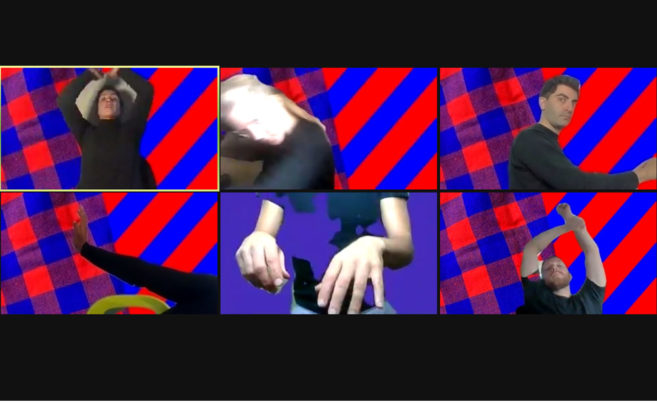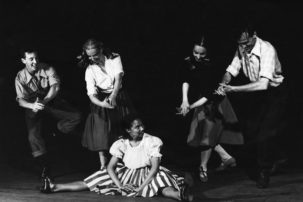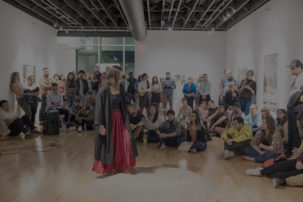Last November, eight months into the pandemic, Dancemakers—Toronto’s second-oldest contemporary dance company and a long-time performance arts organization—announced it would be closing its doors in July 2021, after what would be its final season. Citing revenue losses, rent increases and precarious funding, a press release, dated November 12, 2020, stated that the organization would both cease operations and surrender its space, the Centre for Creation, in Toronto’s Distillery District.
“As with many arts organizations across the country, the global pandemic directly impacted Dancemakers’ capacity to deliver its 19/20 artistic programming, and its financial revenue sources,” Louis-Michel Taillefer, then board chair, stated in that November release. Taillefer also referred to “ever-increasing studio rental costs,” with the organization spending 36 per cent of its 2019–20 operating revenue on occupancy, and claiming to have seen an annual occupancy-cost increase as high as 9 per cent in the previous four years.
Under ordinary circumstances, the closure of a performance venue can feel isolating for its artists and audiences. In 2020 and into 2021, as many of us ache for the shared catharsis of the theatre space, there’s a feeling of ambient grief: Will we ever again be in these spaces together? And if so, in what ways? The sense of isolation intensifies as spaces continue to announce closures—as I was writing this article, yet another venue, Dovercourt House, an integral hub for movement classes, announced it was forced to close after 21 years.
In October 2020—just a month before the Dancemakers closure announcement—Natasha Powell, founder and artistic director of Holla Jazz, was appointed artistic producer at Dancemakers and tasked with supporting in-progress artist residencies by Francesca Chudnoff, Sofí Gudiño, Aisha Sasha John, Lara Kramer and Lee Su-Feh. When the board approached her in July 2020 about taking on this role, she was initially hesitant.
“I needed some time to think about it,” Powell reflects. “I didn’t see anyone who looked like me, when I thought about Dancemakers. I thought about it, and what appealed to me was supporting the artists. It was a fragile place to be in, in the middle of a pandemic—a racialized pandemic—I recognized a need for care in that time and space. Systemic issues that exist in the world also exist within our community.”
In the case of Dancemakers, some members of the artistic community, it seems, swiftly turned some of its grief and concern into a kind of action. Soon after the November closure announcement, an anonymously authored petition started to circulate among certain Toronto-based dance artists; it expressed disappointment with the closure and called for public consultation.
In early January, responding to this community outcry, the board announced it would be accepting applications to replace its members, thereby leaving an opportunity for continuation of the organization. Five candidates submitted statements of interest and, after Dancemakers’ Annual General Meeting on February 1, those five people—Brodie Stevenson, Simon Rossiter, Robert Abubo, Kate Hilliard and Sebastian Mena—were installed as the new board of directors.
The new board president is Brodie Stevenson, a Toronto-based independent dancer and choreographer who regularly works with Throwdown Collective as well as other Canadian choreographers. Stevenson emphasized the board’s commitment to ensuring that already announced programming—like those artist-in-residence programs—is still supported through the transition.
He also stressed that the newly elected board will work collaboratively to re-envision what the company might be, and will “begin a process to articulate an artistic mandate through broad community consultation with input from equity-seeking groups about what will serve the community.”
But some changes are already well determined: one of the first decisions of the newly appointed board early in February was to relinquish the Dancemakers space, which includes a theatre, rehearsal studio and office.
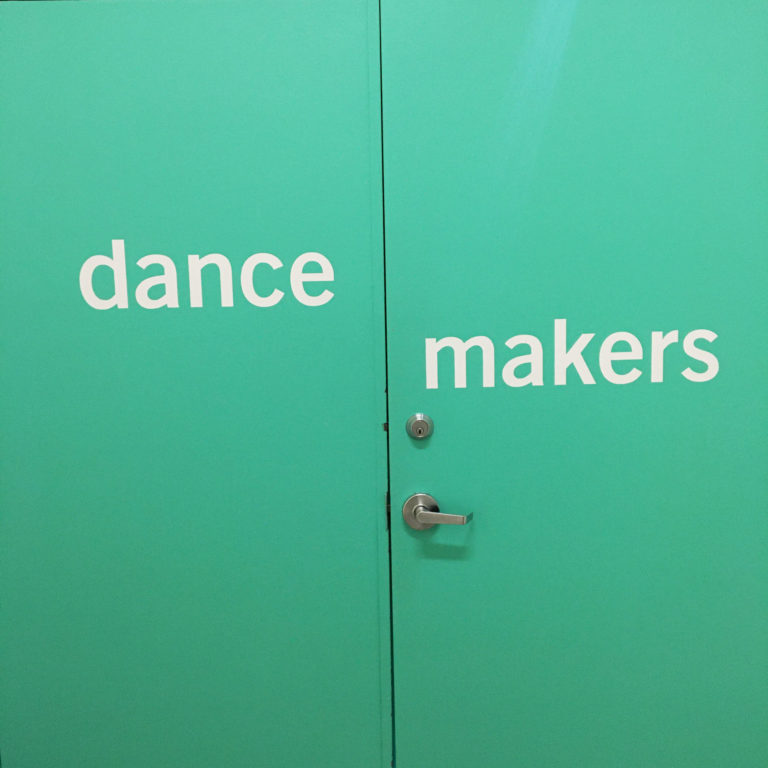 Doors to one of the Dancemakers studio spaces. Photo: Leah Sandals.
Doors to one of the Dancemakers studio spaces. Photo: Leah Sandals.
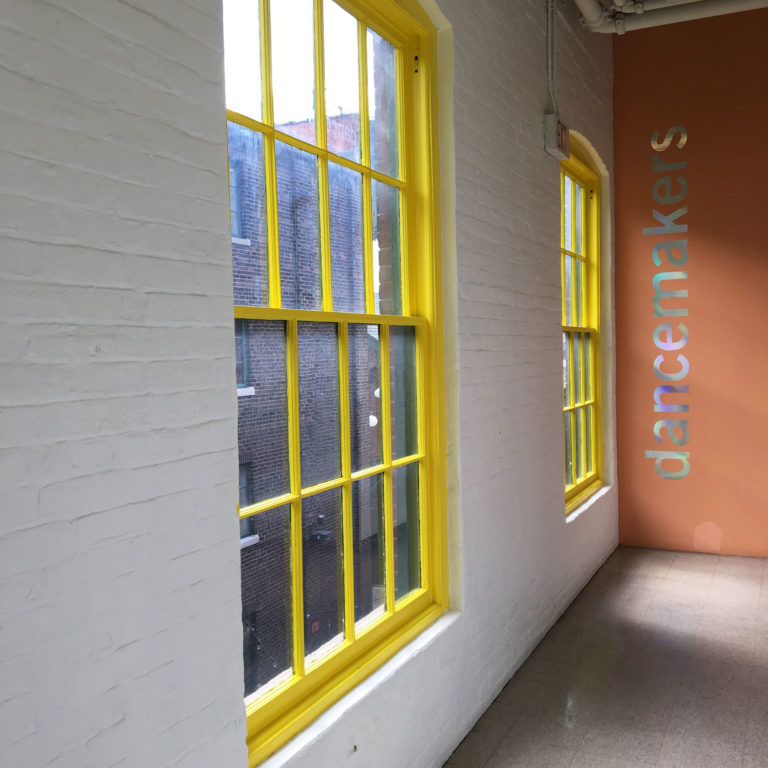 Dancemakers sign in a hallway at the Distillery in Toronto. Photo: Leah Sandals.
Dancemakers sign in a hallway at the Distillery in Toronto. Photo: Leah Sandals.
It was 19 years ago, in 2002, that the company acquired their current home, at Artscape Distillery Studios, and it was this space that became a liability for the organization, eating up an ever-increasing portion of their operating budget and leading to a rollercoaster of deficit and recovery. (Artscape’s annual financial statements for 2019 suggest part of the reason rental rates increased so quickly at this site: under Artscape’s lease with Distillery-area property owner Cityscape Holdings Inc., rent “increases by the greater of 4.75% per annum or the percentage increase in the CPI as compared to the immediately preceding year.” On top of this, “an additional management fee in the amount of 2.5% of the base annual rent” is paid to Cityscape. By comparison, Artscape (according to the same statements) pays just $1 per year rent at some of its other facilities around Toronto; those leases are with the City itself, not a private owner.) In short, many in the community perceived Dancemakers as rich in space, a rarity for dance organizations, when in reality this asset led to an increasing reliance on rental of the space to other arts and community groups in order to survive financially.
“The economic climate that we’re in means that small to mid-scale arts organizations are beholden to a kind of image, a kind of economic language, we cannot afford to maintain,” observes Amelia Ehrhardt, the most recent curator for Dancemakers, who departed in 2019.
For much of its 46-year history, Dancemakers has been nimble in structure, and able to respond to the realities of the larger Canadian performing arts sector. Founded in April 1974 as a cooperative of 10 dancers, most of whom were York University Department of Dance graduates, the Dancemakers collective worked under a mandate to showcase local talent. Under the leadership of Marcy Radler and Andréa Ciel Smith, with mentorship from Grant Strate, founder of York’s Department of Dance, the collective offered a platform for dancers who would otherwise not have their work seen; at the time, there were two major theatre dance companies operating in the city—the National Ballet of Canada and Toronto Dance Theatre. By 1977 the company took on a co-director model led by Peggy Baker and Pat Miner, who were briefly succeeded by Anna Blewchamp in 1979. The 1980s was a “boom-time” for dance in Canada and, under a new co-directorship of Carol Anderson and Pat Fraser, the collective responded by adopting a repertoire company model, performing a corpus of choreographic works recognizable to contemporary dance audiences. Soon, Anderson would take the lead as sole artistic director from ’85 to ’88. This period was one in which the company focused on presenting accessible work by Canadian choreographers such as James Kudelka, Jennifer Mascall, Carol Anderson and Judith Marcuse, as well as international works from Paul Taylor, Doris Humphrey, Lar Lubovitch and many others.
This boom-time of the 1980s brought increased opportunities for international touring, and it became less of a priority for the company to showcase work from Canadian centres. In the late 1980s, with the appointment of Bill James as artistic director, the company would act as interpreter for James’s more personal choreographic vision. Serge Bennathan succeeded James and led the company from 1990 to 2006, during its “rock-star” era—a time of continued international touring and space expansion. With the departure of the next artistic director, Michael Trent, in 2014, the company embraced a residency model, focusing on collaboration and experimentation with an increased interest in live art and mixed media.
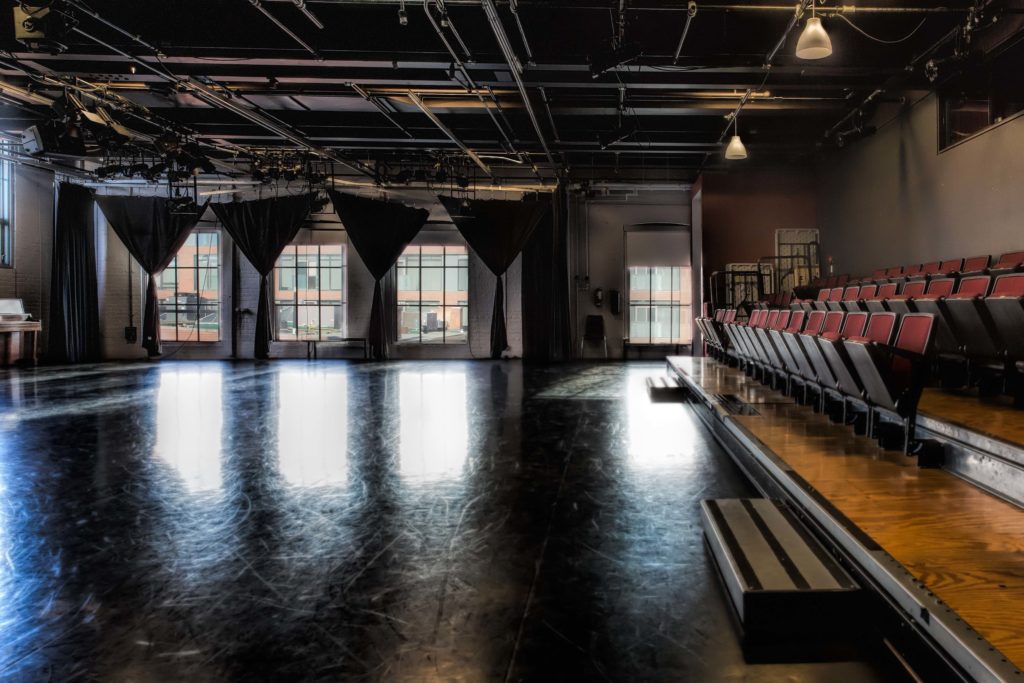 Interior of a studio with theatre seating at Dancemakers. Photo: Iden Ford. Courtesy of Dancemakers.
Interior of a studio with theatre seating at Dancemakers. Photo: Iden Ford. Courtesy of Dancemakers.
Now, in 2021, it might well be time to evaluate the roles of both arts boards and artistic directors.
A main grievance of the recent Dancemakers petition—which was signed by more than 280 community members, although it was never released publicly—was that there was no artistic leadership in place when the board made its decision to close. In fall 2019, when the last curator, Amelia Ehrhardt, announced her resignation, the position was left unfilled due to an already existing deficit at the organization, with plans to search for a new artistic director in April 2020. Then COVID-19 hit, and several of the organization’s revenue streams vanished. Even with support from arts council emergency relief funds, the financial future of the organization looked dire. With Artscape’s own lease with the Distillery expiring in August 2022 and a move for Dancemakers thus likely on the horizon, the board, earlier in 2020, did not feel confident that the current level of operational funding would be maintained. It seemed too risky to program past the 2020–21 season and hire a new artistic director.
In the wider performing arts community, there have also been concerns of late about the way boards of such organizations work (or don’t).
“The [performing arts’ board] model was lifted from the corporate sector, when public funders determined they needed some kind of oversight over artists who were being given money to make theatre,” theatre artist Yvette Nolan wrote in September. “But the corporate world has stakeholders for whom profit is the major, often the only, measure of success, whereas theatre is not-for-profit, and the stakeholders are artists, audiences, communities at large, all of whom often have competing ideas of success.”
Perhaps it is artists who could set the course going ahead.
“How do we recognize our own currency [as artists] and take it out of the hands of developers, who have been able to capitalize on it?” Natasha Powell asks. Artist autonomy does remain a key issue in the sector—one Powell recently enacted as an artist herself by resigning as artistic producer at Dancemakers after months of stewarding it through crisis and change, and shifting focus to her own projects with Holla Jazz and the Black Lindy Hoppers Fund, among others. (Dancemakers’ new board, in turn via a public update posted to Facebook February 23, has stated that it is “committed to honouring her curatorial intentions and artistic planning to the fullest of our ability and to honouring the balance of her contract in recognition that the change in direction should not adversely affect any artist’s livelihood.”)
It is unclear whether the closure of Dancemakers would have redistributed resources back into the dance community, to other artists, perhaps ones who have been historically underfunded. There is no guarantee that these funds, originating from national, provincial and municipal arts councils, would have stayed within dance organizations. (The Canada Council’s nondisciplinary funding model further obscures any such assumption.) According to Ehrhardt and Stevenson, fear that the money would leave the city’s dance sector was one of the motivating factors outlined in the petition. The hope is that maintaining the organization in some way, with or without its Distillery District space, will also retain funds for dance and live art in Toronto.
It’s difficult to predict what the next and beyond will bring for dance and live art, which have been particularly vulnerable to the weather of this pandemic. In the best of times, dance artists already face a triple threat of challenges: dance takes a lot of rehearsal and performance space to produce and present; it requires a team of employees to execute; and it’s historically underfunded in the arts sectors. In short, dance is expensive, and the pandemic has dealt the sector the additional blow of making contact and communal creation a challenge. Although dance artists have pivoted to online presentations of their work, dance mediated or created for screens is creation and consumption of a different medium.
Moving forward, Stevenson says that the board will prioritize transparency by considering and including community voices in its decision-making processes, noting that the board is “in triage” in service of the organization. This responsiveness will require embodying what Dancemakers has done since its inception: shapeshifting to serve its audiences, artists and communities.

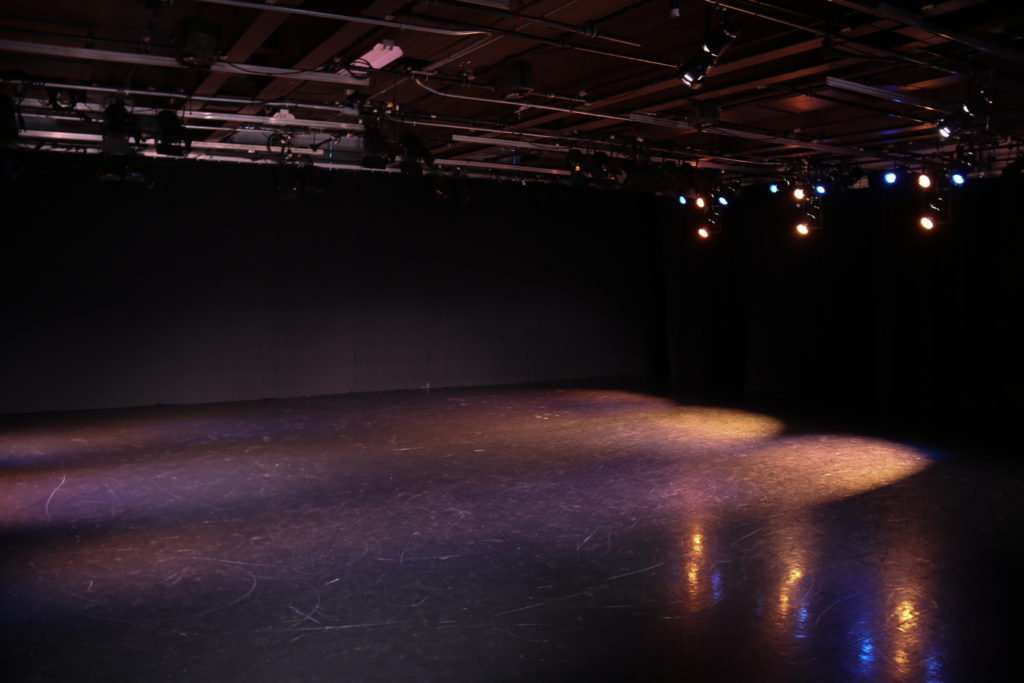 Dancemakers Studio 313. Photo: Mariliena Pearson. Courtesy of Dancemakers.
Dancemakers Studio 313. Photo: Mariliena Pearson. Courtesy of Dancemakers.
